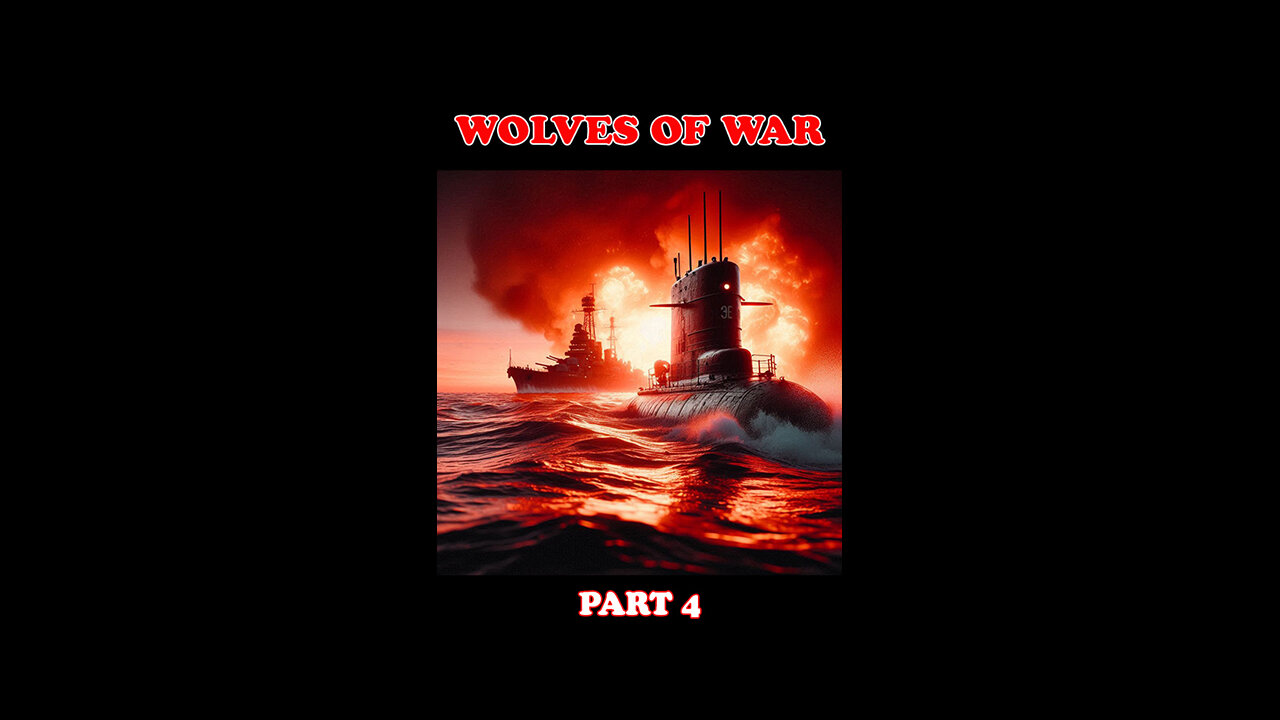Premium Only Content

Are U-Boat Battles the Chess of War? (Part 4)
Discover the deadly tactics, advanced technology, and chilling strategies of German U-boats during World War II that nearly crippled Allied supply lines.
Grab a FREE Sahara Desert ebook HERE: https://bit.ly/3PePvYU
If you enjoy it, a sub would be awesome!
VISIT US AT: https://panther-ebooks.com/ for superb ebook stories from world renowned authors and other upcoming authors.
THE SECRETS OF GERMAN U-BOAT WARFARE IN WORLD WAR II
German U-boats, the infamous submarines of the Kriegsmarine, revolutionized naval warfare during World War II. With the strategic goal of cutting off Allied supply lines, these stealthy vessels prowled the oceans, hunting merchant ships carrying vital resources. The success of the U-boat campaign lay in its highly secretive tactics, innovative technology, and cunning strategies that created a chilling underwater chess game.
At the heart of the U-boat’s effectiveness was the wolfpack tactic, known in German as Rudeltaktik. Instead of operating alone, U-boats worked in coordinated groups. Directed by radio signals from command centers like the infamous Kerneval bunker in France, these packs would lie in wait in the Atlantic shipping lanes. When a convoy was spotted by a patrolling U-boat, it would shadow the target undetected, broadcasting its position to others in the pack. Once gathered, the wolfpack would launch a devastating night attack, overwhelming the convoy’s defenses with torpedoes.
The technology aboard U-boats was cutting-edge for its time. Equipped with advanced hydrophones, they could detect the propeller sounds of enemy ships from miles away, allowing them to locate targets even in the vast Atlantic. The deadly G7e torpedo, used in later years, was electrically powered, leaving no telltale trail of bubbles to reveal the submarine’s position. To avoid detection, U-boats also utilized Schnorchel devices, enabling them to stay submerged while running diesel engines to recharge batteries. This innovation made them less vulnerable to Allied air patrols.
Surprise and stealth were the U-boat’s greatest allies. Operating primarily at night, they surfaced just long enough to launch their attacks before vanishing beneath the waves. Their periscopes allowed commanders to scout targets without exposing the vessel. Once submerged, U-boats relied on thermal layers in the ocean to confuse sonar systems, making detection nearly impossible.
One of the most fascinating aspects of U-boat strategy was the emphasis on psychological warfare. The Kriegsmarine understood that fear and uncertainty could cripple Allied efforts. Survivors of attacks were often left stranded in lifeboats to tell tales of U-boat ruthlessness, spreading terror among merchant crews. Propaganda broadcasts celebrated U-boat victories, bolstering German morale and demoralizing the Allies.
However, the Allies fought back with their own innovations. They developed depth charges to attack submerged U-boats, improved sonar technology for detection, and Hedgehog anti-submarine weapons that launched a barrage of explosives. The implementation of the convoy system, with warships escorting merchant vessels, also reduced the U-boats’ effectiveness.
Despite these measures, U-boats sank over 2,800 Allied ships, amounting to 14.5 million tons of shipping. Their campaign was so effective that British Prime Minister Winston Churchill later admitted, “The only thing that ever really frightened me during the war was the U-boat peril.”
The U-boats were a paradox of warfare, both technological marvels and harbingers of destruction. Though ultimately outmatched by Allied countermeasures, their tactics and strategies remain a testament to the deadly innovation of submarine warfare, forever shaping the history of naval conflict.
-
 2:01:23
2:01:23
The Dilley Show
4 hours ago $11.82 earnedVought Confirmed, Elon Loves Trump and Q&A Friday! w/Author Brenden Dilley 02/07/2025
46.5K7 -
 1:57:39
1:57:39
The Charlie Kirk Show
4 hours agoThe Greatest Deportation Wave in History + AMA | Homan | 2.7.2025
111K65 -
 2:02:15
2:02:15
LFA TV
19 hours agoMAINSTREAM MAGA! | LIVE FROM AMERICA 2.7.25 11am
88.6K61 -
 1:17:37
1:17:37
Game On!
5 hours ago $2.12 earned5 SHOCKING Super Bowl Stats and Trends!
48.4K2 -
![[Ep 601] USAID / CIA | Panama | Guest Sam Anthony of [your]NEWS](https://1a-1791.com/video/fwe2/b0/s8/1/E/U/D/u/EUDux.0kob-small-Ep-601-USAID-CIA-Panama-Gue.jpg) 2:01:29
2:01:29
The Nunn Report - w/ Dan Nunn
3 days ago[Ep 601] USAID / CIA | Panama | Guest Sam Anthony of [your]NEWS
33.9K11 -
 58:57
58:57
The Dan Bongino Show
7 hours agoDOGE Uncovers More Corruption Than We Ever Thought Possible (Ep. 2418) - 02/07/2025
853K1.96K -
 47:52
47:52
The Rubin Report
5 hours agoCalifornia Businessman Makes Joe Rogan Go Quiet with Never-Before-Told Details of LA Fires
102K38 -
 2:05:11
2:05:11
Benny Johnson
5 hours ago🚨INSURRECTION: Violent Democrats Storm DC Federal Buildings! Vow to Impeach Trump | 100K Feds Resign
155K414 -
 1:06:22
1:06:22
The Big Mig™
20 hours agoGlobal Finance Forum From Bullion to Borders
17K8 -
 1:34:04
1:34:04
Film Threat
18 hours agoLOVE HURTS + HEART EYES + LOADS OF REVIEWS | Film Threat Livecast
18K